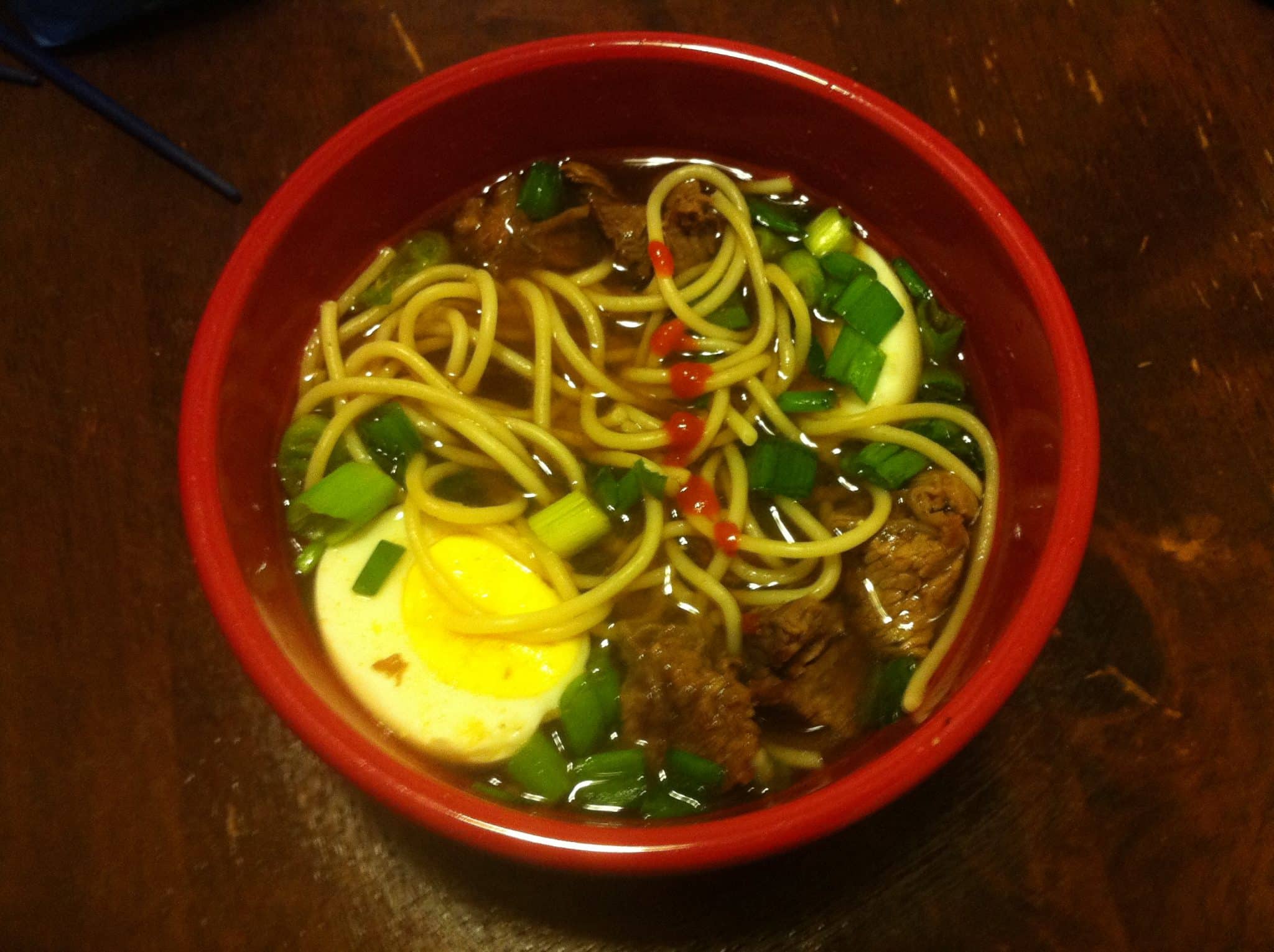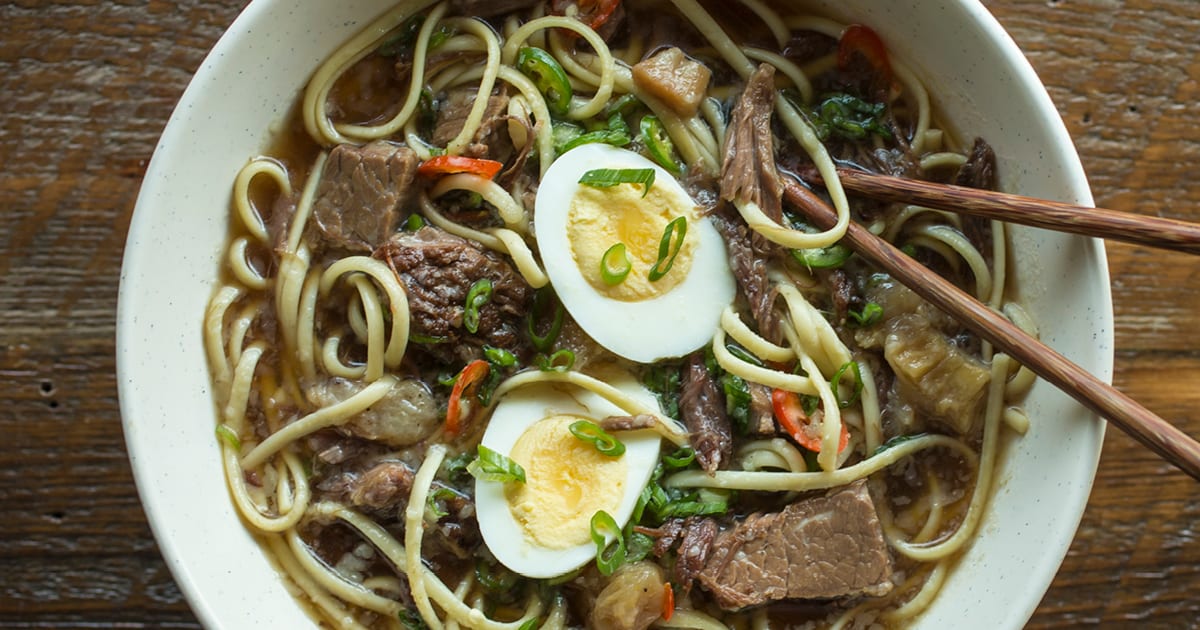Embark on a culinary journey with Miss Linda’s Yakamein Recipe, a beloved dish that weaves together flavors and traditions. Originating from the vibrant community, this recipe has become an integral part of its culinary heritage, offering a tantalizing blend of ingredients that dance harmoniously on the palate.
Unveiling the secrets of this cherished dish, we delve into the significance of each ingredient, exploring their unique contributions to the symphony of flavors and textures. From the aromatic spices to the tender noodles, every element plays a vital role in creating the perfect balance.
Miss Linda’s Yakamein Recipe Overview
Miss Linda’s yakamein recipe is a beloved dish in the community, with origins tracing back to the early 20th century. It is a fusion of Vietnamese and Chinese culinary traditions, reflecting the diverse heritage of the community.
The dish holds significant cultural importance, symbolizing the harmonious blending of different cultures and the resilience of the community. Its popularity extends beyond the local community, attracting visitors and food enthusiasts from afar.
Ingredients and Cooking Process
Miss Linda’s yakamein is characterized by its rich and flavorful broth, made from a combination of pork bones, chicken, and shrimp. The noodles used are typically Chinese egg noodles, which are added to the broth along with a variety of toppings such as pork, shrimp, and vegetables.
The cooking process involves simmering the broth for several hours to develop its depth of flavor. The toppings are then added and cooked until tender. The dish is typically served with a side of pickled vegetables and a spicy chili sauce, adding a tangy and spicy element to the overall experience.
Ingredients and Their Significance

Miss Linda’s Yakamein recipe calls for a variety of ingredients, each playing a crucial role in creating the dish’s distinct flavor and texture.
Broth
- Chicken stock: Forms the base of the broth, providing a rich and savory flavor.
- Pork bones: Enhance the broth’s depth and umami, contributing to its fullness.
- Seafood stock: Adds a briny, oceanic flavor, complementing the seafood in the dish.
- Soy sauce: Imparts a salty and umami flavor, balancing the sweetness of the broth.
- Fish sauce: Adds a unique, pungent flavor, characteristic of Southeast Asian cuisine.
- Oyster sauce: Contributes a rich, savory flavor with a hint of sweetness.
Noodles
The dish’s signature noodles are made from wheat flour and have a slightly chewy texture.
Seafood
- Shrimp: Provides a succulent and briny flavor, adding a delicate sweetness to the dish.
- Crab: Enhances the seafood flavor with its sweet and slightly earthy taste.
- Squid: Adds a chewy texture and a subtle oceanic flavor.
Vegetables
- Green onions: Provide a fresh, aromatic flavor and a pop of color.
- Cilantro: Adds a bright, citrusy flavor, balancing the richness of the broth.
- Bean sprouts: Offer a crunchy texture and a mild, slightly sweet flavor.
- Hard-boiled eggs: Provide a protein-rich addition with a creamy yolk.
Other Ingredients
- Yakamein seasoning: A pre-packaged blend of spices, including turmeric, paprika, and garlic powder, adds a distinctive flavor to the dish.
- Lemongrass: Imparts a subtle citrusy and herbaceous aroma.
- Lime juice: Adds a refreshing acidity, balancing the richness of the broth.
Unique Ingredients and Substitutes
Yakamein seasoning is a unique ingredient that may not be readily available. As a substitute, you can use a combination of turmeric, paprika, and garlic powder.
Step-by-Step Cooking s: Miss Linda’s Yakamein Recipe
Preparing Miss Linda’s Yakamein is a delightful culinary journey. Follow these detailed s to create a savory and authentic dish that will tantalize your taste buds.
Before embarking on this cooking adventure, gather all the necessary ingredients and ensure you have the appropriate cookware and utensils. This will help streamline the process and make it more enjoyable.
Preparing the Ingredients
Begin by preparing the ingredients as Artikeld in the previous section. This includes washing and chopping the vegetables, marinating the chicken, and measuring out the seasonings.
- Thoroughly rinse the vegetables under cold running water to remove any impurities.
- Cut the vegetables into uniform sizes to ensure even cooking.
- Marinate the chicken in the prepared marinade for at least 30 minutes to enhance its flavor.
- Measure out the seasonings accurately to achieve the desired taste profile.
Cooking the Chicken and Vegetables, Miss linda’s yakamein recipe
In a large pot or Dutch oven over medium heat, brown the chicken in a drizzle of oil. Once browned, remove the chicken from the pot and set aside.
Add the chopped vegetables to the same pot and sauté until they begin to soften, about 5-7 minutes. Stir frequently to prevent burning.
Creating the Broth
Return the browned chicken to the pot with the vegetables. Add the chicken broth, water, and seasonings. Bring the mixture to a boil, then reduce heat and simmer for at least 30 minutes, or until the chicken is cooked through and the vegetables are tender.
Season the broth to taste, adding additional seasonings as desired.
Assembling the Yakamein
While the broth is simmering, cook the noodles according to the package directions. Drain the noodles and set them aside.
To assemble the yakamein, place a bed of noodles in a bowl. Top with the cooked chicken, vegetables, and broth. Garnish with green onions, cilantro, and fried onions for an extra burst of flavor.
Variations and Adaptations

Miss Linda’s Yakamein recipe is a versatile dish that can be adapted to suit various dietary restrictions, preferences, and personal tastes. Here are some common variations and adaptations:
Dietary Restrictions:
- Gluten-free: Use gluten-free soy sauce or tamari instead of regular soy sauce, and ensure all other ingredients are gluten-free.
- Vegetarian/Vegan: Replace the pork with extra vegetables or plant-based protein sources such as tofu or tempeh. Use vegetable broth instead of chicken broth.
- Low-sodium: Use low-sodium soy sauce or reduce the amount of salt added to the dish.
Preferences and Personal Touches:
- Spicy: Add chili flakes, Sriracha, or chopped jalapeños to taste.
- Creamy: Add a dollop of sour cream or Greek yogurt to the soup.
- Seafood: Add shrimp, scallops, or other seafood to the soup.
- Vegetables: Add more vegetables to the soup, such as carrots, celery, or bell peppers.
Presentation and Serving Suggestions

Miss Linda’s Yakamein is traditionally presented in a large bowl or soup tureen. The noodles are arranged in a nest at the bottom of the bowl, and the broth is poured over them. The toppings are then arranged on top of the noodles, and the dish is served hot.
To enhance the presentation, you can garnish the yakamein with chopped green onions, cilantro, and fried garlic. You can also serve it with a side of lime wedges, Sriracha, and hoisin sauce.
Serving for Different Occasions
Yakamein is a versatile dish that can be served for a variety of occasions. It is a popular choice for family gatherings, potlucks, and casual get-togethers. It can also be served as a main course or a side dish.
- For a family gathering or potluck, you can make a large batch of yakamein and serve it in a communal bowl. Be sure to provide plenty of toppings and accompaniments so that everyone can customize their bowls to their liking.
- For a casual get-together, you can serve yakamein as a main course or a side dish. If you are serving it as a main course, be sure to provide a side of rice or bread.
- If you are serving yakamein for a special occasion, you can dress it up with a few extra garnishes, such as sliced hard-boiled eggs or roasted peanuts.
Cultural and Historical Context
Miss Linda’s Yakamein recipe holds significant cultural and historical importance in the community. It embodies the rich culinary heritage of the Gulf Coast region, where diverse cultures have intertwined over centuries.
The dish traces its roots to the early 19th century, when Chinese immigrants settled in the Gulf Coast. They brought with them their culinary traditions, including a noodle dish called “yakamein.” Over time, the dish evolved, incorporating influences from African American, Cajun, and Creole cuisines. These influences shaped the unique flavor profile of Miss Linda’s Yakamein, which has become a beloved staple in the community.
Stories and Anecdotes
Miss Linda’s Yakamein has become a symbol of community gatherings and celebrations. Families and friends often gather to enjoy the dish, sharing stories and laughter. It is a dish that evokes a sense of nostalgia and belonging.
- One local resident recalls how Miss Linda’s Yakamein was always served at family gatherings. The aroma of the dish would fill the house, creating a warm and inviting atmosphere.
- Another anecdote tells the story of a church fundraiser where Miss Linda’s Yakamein was the main attraction. The event raised a significant amount of money for the community, demonstrating the dish’s power to bring people together.
Final Review
As we conclude our exploration of Miss Linda’s Yakamein Recipe, we recognize its profound cultural and historical significance. This dish transcends mere sustenance; it embodies the spirit of a community, carrying with it stories and traditions that have been passed down through generations. Whether enjoyed as a comforting meal or celebrated as a culinary masterpiece, Miss Linda’s Yakamein Recipe continues to captivate and delight, leaving an indelible mark on the tapestry of culinary history.
FAQ Summary
What is the origin of Miss Linda’s Yakamein Recipe?
Miss Linda’s Yakamein Recipe has its roots in the vibrant community, where it has been passed down through generations.
What makes Miss Linda’s Yakamein Recipe unique?
This recipe stands out with its harmonious blend of spices, tender noodles, and fresh ingredients, creating a captivating symphony of flavors and textures.
Can Miss Linda’s Yakamein Recipe be adapted to suit dietary restrictions?
Yes, the recipe can be easily adapted to accommodate various dietary restrictions, such as gluten-free or vegan preferences.